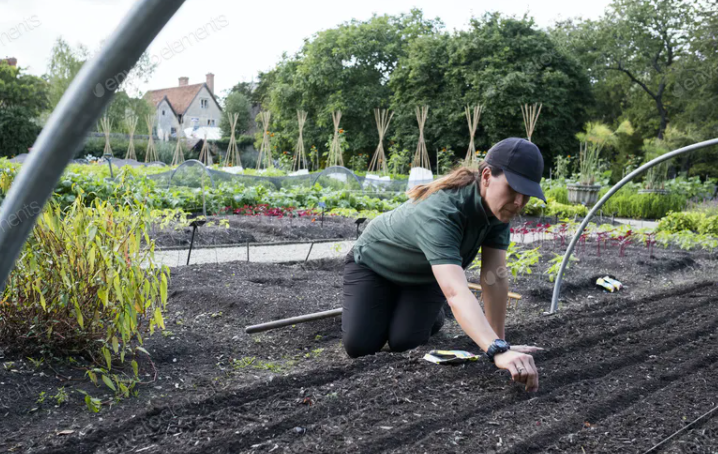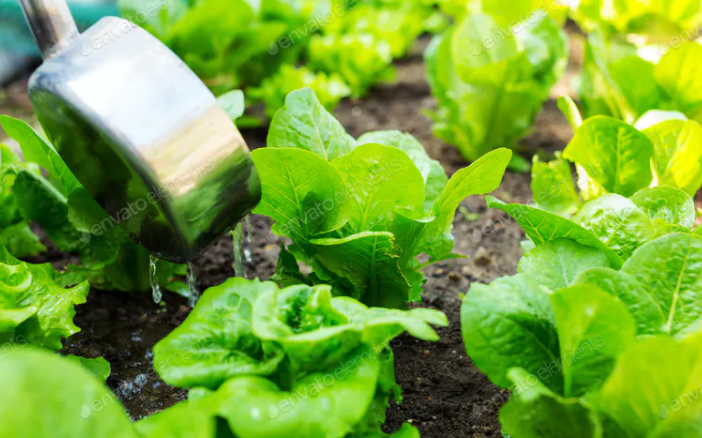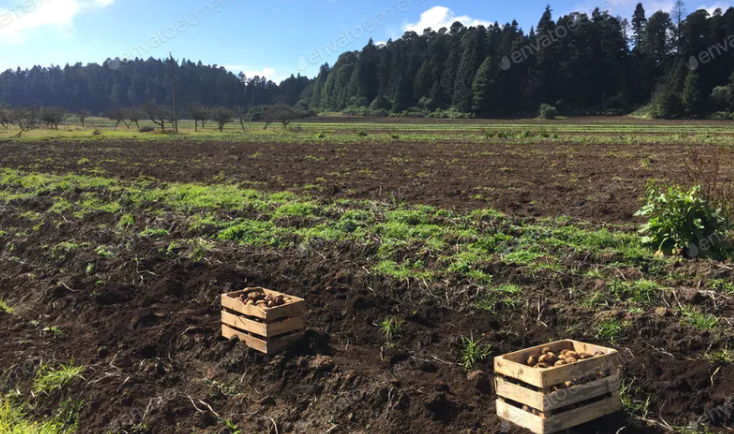In this article, we are going to talk about ensuring household food security through bio-intensive gardening. Several natural disasters happened just at the start of 2020, not only locally, but even in a global scale. COVID-19 can be described as this year’s highlight that affected us thoroughly in every aspect of the community. This pandemic posed threats not only in the health sector but also in the agriculture sector. Questions arise about food security and the food systems.
Food Security
Food security is the availability, accessibility and utilization of quality, nutritious and culturally appropriate food [1]. The opposite is food insecurity, which is often rooted in poverty, especially in rural areas where the incidence of poverty is higher than in urban areas [2].
Poverty coincidentally diminishes countries’ capacity to grow their agricultural markets and economies [3]. Furthermore, the resulting higher food prices may further adversely affect food access and availability for low-income households due to increased population and higher demands for food, coupled with reduced crop productivity [4].
The household food security can be measured by characterizing the food and nutritional status in the community which are affected by various factors. Biophysical factors which greatly affects agricultural systems such as land size, land quality, cropping patterns and storage methods can be measured to affect food security. It also includes market accessibility which is one of the most important factors affecting rural food security. So why not bring the market and food source in your own homes! In this article, we will delve into another gardening principle that you can apply in your journey. It is the bio-intensive gardening or in short, B.I.G!
Bio-Intensive Gardening
Bio-Intensive Gardening (B.I.G.) is one of the awesome gardening approaches available in our reach. Why? Because it is the usage of readily available materials or farm resources particularly those which are derived from plants and animals.
The bio-intensive approach can be considered as a biological or organic form of gardening. Using this approach, a small area will be intensively cultivated, utilizing natural ingredients to rebuild and subsequently maintain the soil’s productivity. At the heart of this approach is the effort to enhance the soil’s capability to nurture and sustain soil and plant life.
Considering those assertions and facts, we can conclude that this gardening approach is more likely very helpful for us to have an inclined knowledge in crop production, even in our own little backyards. So buckle up and take note of the following information!
For the materials, prepare a shovel, rake, garden hose, animal manure, nitrogen-rich leaves (e.g. madre de cacao/kakawate leaves) and any vegetable seeds that you want to plant.
Seed Bed Preparation

If you have a flat land, you need to raise it to build the seed bed. You can do this by digging and putting the soil on top of the seed bed that you are forming. This can be a square or a rectangle type. It depends on you! A deep dug narrow and raised seed beds is the main characteristic of a bio-intensive garden. It must be 12 to 24 inches deep. These beds will be considered permanent and can be used all throughout the year. Thus, you can grow different crops every month! More of this will be discussed at the end of this article.
But take note that it is critical to keep the seed bed constantly covered with plants. Or if there is no water available in some times of the year, you can maintain a 4 to 6 inches of thick layer of dry straw, grass, or any mulch materials.
Seed Bed Fertilization

In an endeavor to place back into the soil much of what originates out of it (such as the nutrients from the plant and animal manure), such materials are recycled back into the soil in the form of green leaf manure, compost, ashes, manure etc.
After forming a seed bed layer, the next layer must be filled with animal manure. After that, it must be topped again with soil. The kakawate leaves (or any nitrogen-rich leaves) will then be placed on top and it will be covered again with soil. If you have a plot of a hundred square feet, you need to allot 8 cubic feet of decomposed manure or compost or green leaf manure or mud press, which is a by-product of sugar mills.
Again, it must be soil, then animal manure, then soil, then leaves and finally another layer of soil. After the seedbed preparation, prepare your seeds and start to plant them in distinct distances from each other, depending on the plant. Water and check your garden every day or when necessary.
Crop Rotation
As what I have mentioned above, the bio-intensive seed bed can be used all throughout the year! Because of that, let me introduce to you the concept of crop rotation. Crop rotation can increase yield and even profitability over time. In terms of pest management, this practice can control the growth of weeds, disrupt disease cycles and minimize insect and other pest infestations.
Surprisingly, this can also provide an alternate source of nitrogen. It can reduce soil erosion, intensify soil organic matter, enhance soil tilth, and decrease the chance of runoff of nutrients and chemicals, as well as the contamination of surface water.
The Pesticide Action Network (PAN) listed the following as advantages of crop rotation:
- Crop rotation aids to create a bio diverse soil which lessens the possibility of soil bound organisms to get a pest thus reducing the utilization of inorganic pesticides.
- Crop rotation helps to reduce the growth of herbs getting a weed that needs to be eradicated. Through this, the usage of pesticides in also avoided.
- Crop rotation benefits the soil through promoting a good soil structure (alternatively shallow and deep rooting roots), elevating organic matter, sufficient water provision, especially in blend with conservation tillage practice. Therefore, resulting in a higher yield.
- Crop rotation, particularly if performed with nitrogen-fixating rotation crops (such as legumes), will decrease the input of fertilizers and so reducing the pollution caused by nitrogen. Just a little trivia, an elevated nitrogen-supply will even add to soil organic matter depletion!
- Crop rotation will lead to greater soil-carbon content, thus it can contribute to combating climate change. This has been proven in decade-long surveys in the United States!
Bio-Intensive Gardening and Sustainable Agriculture

Sustainability is one of the challenges in agriculture practice. This answers the question: Can your garden be productive for a long time? Are you using environmentally beneficial procedures and materials?
Well, just with the fact that bio-intensive gardening has a wide range of advantages to nutrient management and even in pest management, I believe that it can be considered as a part of sustainable agriculture. It is a bonus due to the fact that it can be done readily through the mere availability of the materials needed in this gardening system.
As a recap, bio-intensive gardening is about using the available farm resources which are from plants and animals such as manure and leguminous leaves to increase the soil productivity and enhance the growth of the plants.
Food security in your own house is already made accessible through this system. The only question you need to answer now is: Are you someone who wants to conserve the environment while sustaining your household’s food needs? If your answer is yes, bio-intensive gardening is for you! Enjoy your gardening journey!
If you are looking to start your garden, check out the links in the description for our recommended books and audiobooks.
Don’t forget to download the free ebook too.
Backyard Gardening Book (paperback)
Backyard Gardening Book (audiobook)
Urban Gardening Book (paperback)
Urban Gardening Book (audiobook)
TOP 10 ESSENTIAL TOOLS THAT A BEGINNER GARDENER NEEDS
GARDENING FOR BEGINNERS GUIDE [14 TIPS TO BE SUCCESSFUL]
References
[1] Food Forward, Inc. (2017). What is food insecurity? Food security?. Retrieved from https://foodforward.org/2017/10/what-is-food-insecurity/
[2] Cororaton, C. & Corong, E. (2009). Philippine agricultural and food policies: Implications for poverty and income distribution. Retrieved from https://www.ifpri.org/publication/philippine-agricultural-and-food-policies-0
[3] USDA. Global Food Security. Retrieved from https://nifa.usda.gov/topic/global-food-security
[4] Ahmed UI, et.al. (2017). Status and determinants of small farming households’ food security and role of market access in enhancing food security in rural Pakistan. PLoS ONE 12(10): e0185466. Retrieved https://doi. org/10.1371/journal.pone.0185466

